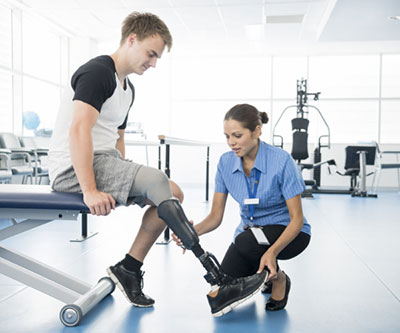
In addition to developing new or improved therapies and treatments for many different health conditions, NICHD supports research to ensure that such interventions are optimally implemented.
Early diagnosis of HIV enables early treatment, which both improves the health of the person living with the virus and greatly reduces transmission to others. NICHD funded the development and evaluation of a digital tool to increase HIV testing among youth ages 13 to 24 years, the least likely of any age group in the United States to know their HIV status. Among youth in a New York City emergency department, the Mobile Augmented Screening tool (MAS) was at least as effective as face-to-face offers of HIV testing, and in some cases more effective. Such a digital tool may offer a convenient way for hospitals to promote youth HIV testing, as few emergency departments would be able to devote a staff member to privately offer HIV tests to all eligible patients. Researchers also found that the privacy offered by the MAS may allow healthcare providers to collect more accurate data on risk behaviors, including details of underage alcohol consumption and other substance use before or during sex.
Estimates suggest that about 3.8 million concussions from sports-related injuries occur each year in the United States. A study supported by NICHD’s National Center for Medical Rehabilitation Research (NCMRR) suggests one possible way to accurately and noninvasively diagnose and monitor sports-related concussions. Researchers found that urine levels of two proteins—IGF-1 and IGFBP5—combined with data from a walking trial could reliably distinguish collegiate athletes diagnosed with a concussion from peers who had not sustained a concussion.
Another NCMRR study contributed to a larger effort to develop predictive models for stroke recovery, with a focus on the potential role of genetic factors in upper extremity impairment. Using large, retrospective datasets, researchers developed a risk index that harmonizes readily available information about the patient’s initial impairment levels with other clinical factors that could affect upper extremity motor impairment 90 days after stroke. The harmonized risk index enabled researchers to initiate studies of the role of genetic factors in stroke outcomes and further refine patient management and personalized medicine.
Developing and refining assistive technologies for people with physical disabilities is an important aspect of ensuring treatments are optimally implemented. Powered leg prostheses can enable or enhance a user’s ability to perform complex activities, like ascending stairs, but programming these devices to switch between different ambulation modes can be challenging. Previous studies established the accuracy of a machine-learning approach, called user-dependent classification, in which data collected from a user trains an algorithm that is subsequently tested against that user. However, this method is extremely time consuming. NCMRR-supported scientists developed an approach that uses an individual’s unique data during real-time use of the prosthetic to improve the algorithm that was trained using a dataset collected from numerous users. This approach was comparable to user-dependent classification but with a major reduction in individual training time, improving usability.
 BACK TO TOP
BACK TO TOP